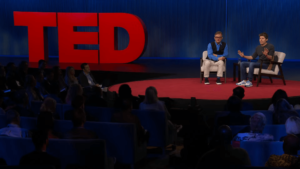Ghibli Effect: Surge in ChatGPT Usage Following Launch of Popular New Feature

The Surge of AI-Powered Image Generation
The rapid advancement of artificial intelligence (AI) has sparked significant interest across various sectors, particularly in creative fields like art and design. One of the standout innovations in this realm is the emergence of AI tools that can generate stunning images. The latest updates in image generation capabilities, especially those inspired by popular animations and artwork, have drawn considerable attention from users around the globe.
What is the Ghibli Effect?
The term "Ghibli effect" emerges from the surge in popularity of AI-supported tools capable of creating images that resemble the iconic style of Studio Ghibli animations. Following the introduction of these features, platforms such as ChatGPT have experienced a dramatic increase in usage. In fact, millions signed up shortly after the rollout of these sophisticated image generation capabilities.
Key Features of AI Image Generators
- User-Friendly Interface: Many AI image generators provide an intuitive interface, allowing users to create complex images with minimal effort.
- Customization Options: Users can often customize images by selecting styles, themes, and various attributes to tailor the final output.
- Speed and Efficiency: Generating images takes only seconds, providing immediate results for users.
- Variety of Styles: These tools can replicate numerous artistic styles including anime, landscapes, and abstract art.
The Role of OpenAI in Image Generation
OpenAI has been at the forefront of this technology, enhancing ChatGPT with the capability to generate images. Their recent feature updates have allowed users to see impressive results quickly and enjoyably. This feature has transformed how people interact with digital content, making it more engaging and visually appealing.
Understanding the Limitations
While AI image generators yield fascinating results, there are notable limits to their capabilities. Despite their proficiency in mimicking various art styles, such as those of renowned filmmaker Hayao Miyazaki, they sometimes miss nuances that human artists naturally capture.
- Creative Depth: AI can generate images based on input, but its understanding of thematic depth is sometimes shallow compared to human creativity.
- Originality: While these tools can produce visually striking pieces, the originality and personal touch often found in human-created art may be lacking.
- Cultural Sensitivity: AI often lacks contextual understanding, which can lead to the generation of culturally inappropriate images.
User Experience and Trends
As the popularity of AI-generated imagery grows, users have reported varied experiences. Immediate engagement from a wide range of demographics has contributed to viral trends across social media platforms. Many users highlight how these tools enable them to express their creativity without requiring extensive artistic skills.
Notable Trends
- Viral Challenges: Users frequently partake in challenges to create images in specific styles, leading to a plethora of shared content online.
- Art Commissions: Some individuals are even utilizing AI-generated images for art commissions, blending technology with traditional creative processes.
- Innovative Artwork: Artists are exploring collaborations with AI, using it as a tool to enhance their artistic vision.
Future Developments
With the overwhelming interest in AI image generation, industry leaders like Sam Altman have hinted at forthcoming upgrades. Future versions are expected to address the current limitations, integrating more advanced algorithms that enhance the quality and authenticity of generated images. These improvements may include greater understanding of artistic nuances and improved customization features.
As the technology evolves, the boundaries between human creativity and machine-generated art will likely continue to blur, opening up new avenues in the realm of digital expression. These advancements indicate an exciting future for both creators and AI enthusiasts alike.






